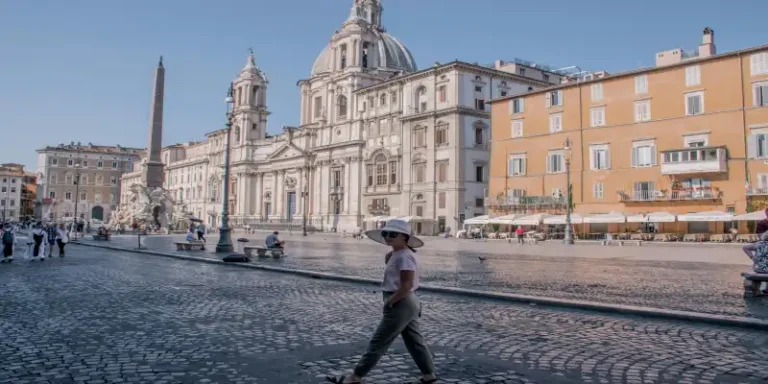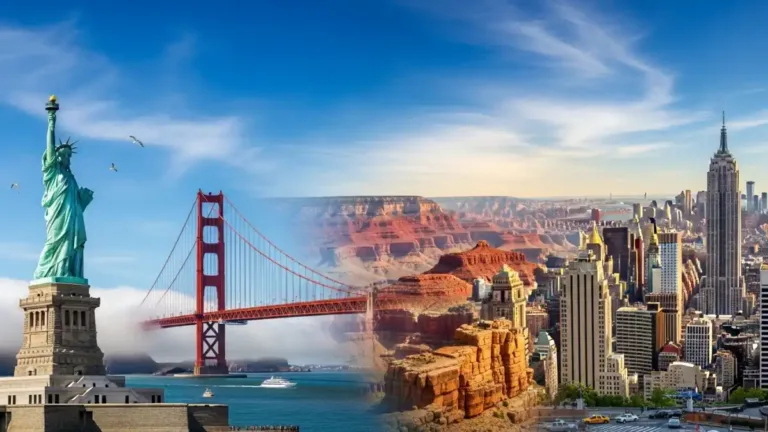Table of Contents
- Introduction: A Journey Through Rome’s Artistic Legacy
- Overview of “A Cultural Odyssey: Rome’s Best Museums and Art Galleries”
- 2.1 Overview of the Content
- 2.2 Visual Presentation and Layout
- 2.3 Target Audience and Purpose
- In-Depth Exploration of Featured Museums
- 3.1 The Vatican Museums: A Treasure Trove of Religious Art
- 3.2 Galleria Borghese: The Pinnacle of Baroque Art
- 3.3 Capitoline Museums: The Birthplace of Public Art Collections
- 3.4 Museo Nazionale Romano: The Legacy of Ancient Rome
- 3.5 MAXXI – National Museum of 21st Century Arts: A Modern Masterpiece
- Highlighting the Best Art Galleries
- 4.1 Gagosian Gallery: Where Contemporary Meets Classic
- 4.2 Galleria d’Arte Moderna: A Showcase of 19th and 20th-Century Art
- 4.3 Palazzo Doria Pamphilj: A Private Collection of Unrivaled Masterpieces
- 4.4 Macro – Museum of Contemporary Art of Rome: A Modern Artistic Hub
- Curation and Thematic Organization
- 5.1 Selection Criteria for Featured Museums and Galleries
- 5.2 Thematic Representation and Artistic Movements
- 5.3 The Role of Architecture in Enhancing the Visitor Experience
- User Experience: Navigating the Guide
- 6.1 Ease of Use and Accessibility
- 6.2 Interactive Features and Digital Integration
- 6.3 Tips and Recommendations for Visitors
- Cultural Significance and Educational Value
- 7.1 Preserving Rome’s Artistic Heritage
- 7.2 Enhancing Cultural Understanding Through Art
- 7.3 Educational Resources and Learning Opportunities
- Pros and Cons of “A Cultural Odyssey: Rome’s Best Museums and Art Galleries”
- 8.1 Pros
- 8.2 Cons
- Final Verdict: An Artistic Journey Worth Taking
- Frequently Asked Questions (FAQs)
Introduction: A Journey Through Rome’s Artistic Legacy
Rome is a city that wears its history on its sleeve, with every corner steeped in rich cultural heritage. From ancient ruins to Renaissance masterpieces, the Italian capital is an open-air museum in itself. But beyond the famous landmarks lies a treasure trove of art, housed within the city’s finest museums and galleries. “A Cultural Odyssey: Rome’s Best Museums and Art Galleries” serves as an in-depth guide to exploring these artistic havens, offering a curated journey through Rome’s most revered cultural institutions.
In this detailed review, we will embark on an extensive exploration of this guidebook, delving into its content, layout, and overall value. With a bias toward the positive aspects, this review will highlight the strengths of “A Cultural Odyssey” while also acknowledging areas where it could improve. Whether you’re an art lover, a history buff, or a curious traveler, this review aims to provide a comprehensive understanding of what this guide offers.
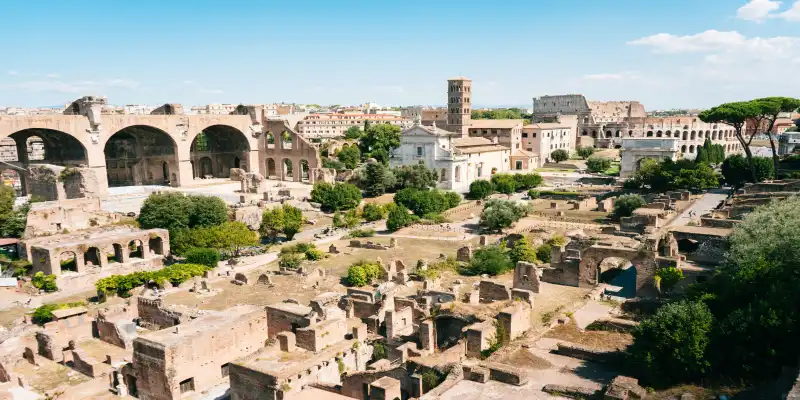
Overview of “A Cultural Odyssey: Rome’s Best Museums and Art Galleries”
2.1 Overview of the Content
“A Cultural Odyssey: Rome’s Best Museums and Art Galleries” is a meticulously curated guide that provides readers with an insider’s view of Rome’s most significant artistic and cultural institutions. The guide is divided into sections that focus on both museums and art galleries, ensuring a well-rounded exploration of Rome’s artistic offerings. Each section is rich in detail, offering historical context, descriptions of key artworks, and practical information for visitors.
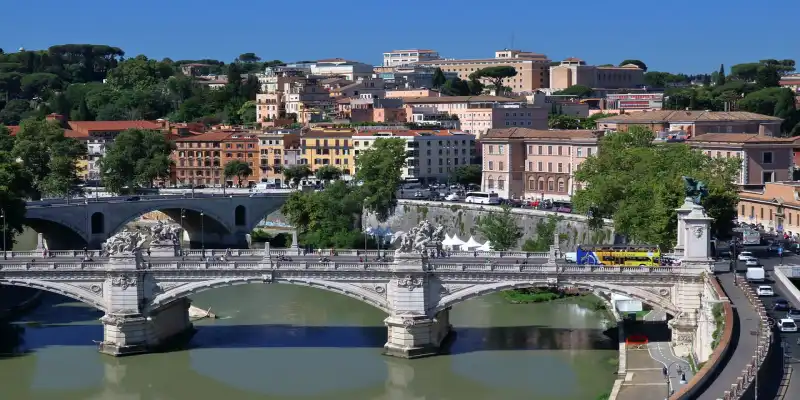
The guide is particularly strong in its breadth, covering a wide range of periods and styles, from ancient Roman artifacts to contemporary art installations. This diversity makes it a valuable resource for anyone looking to understand the evolution of art in Rome and how it reflects the city’s complex history.
2.2 Visual Presentation and Layout
One of the standout features of this guide is its visual presentation. The layout is both visually appealing and user-friendly, with high-quality images that complement the detailed descriptions. The use of color, font, and spacing is well thought out, making the guide easy to navigate and pleasing to the eye. Each museum and gallery is presented with a mix of full-page images and smaller, detailed photographs that highlight specific artworks or architectural features.
The guide also includes maps and floor plans, which are incredibly useful for visitors who want to plan their visits efficiently. The visual elements not only enhance the reader’s experience but also provide a virtual preview of what to expect, making the guide an excellent tool for planning.
2.3 Target Audience and Purpose
“A Cultural Odyssey” is clearly designed with a diverse audience in mind. Whether you’re a seasoned art historian or a casual tourist, the guide offers something for everyone. The language is accessible yet informative, striking a balance between scholarly insight and general appeal. For art enthusiasts, the guide offers deep dives into specific works and artists, while for tourists, it provides practical tips and background information that enrich the experience of visiting these cultural landmarks.
The primary purpose of the guide is to educate and inspire. By offering detailed descriptions and historical context, it aims to deepen the reader’s understanding of Rome’s art scene. At the same time, it encourages exploration by highlighting lesser-known gems alongside the more famous institutions.
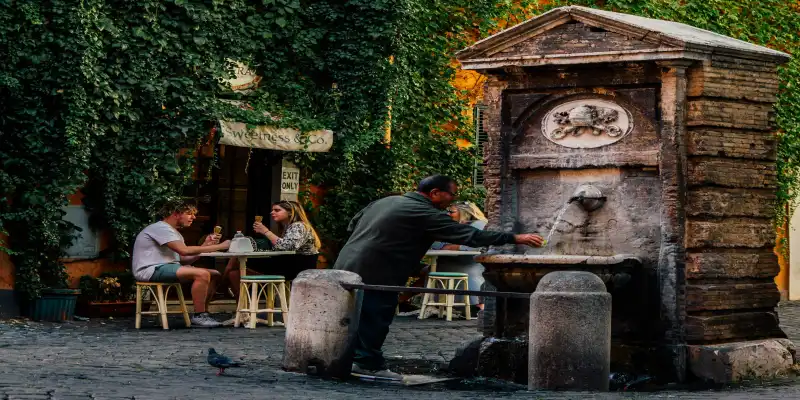
Food and Culture
Italian cuisine is world-renowned, and Rome is no exception. Enjoy classic dishes like pasta carbonara, Roman-style pizza, and gelato from local trattorias and gelaterias. The city’s vibrant piazzas and bustling markets offer a true taste of Roman life. Don’t miss the opportunity to experience an authentic Italian aperitivo, a pre-dinner drink accompanied by small bites.
In-Depth Exploration of Featured Museums
3.1 The Vatican Museums: A Treasure Trove of Religious Art
The Vatican Museums are arguably the crown jewel of Rome’s cultural institutions. As the repository of the Catholic Church’s vast collection of art, the Vatican Museums offer an unparalleled journey through religious art and history. “A Cultural Odyssey” does an excellent job of capturing the grandeur and significance of this museum complex.
The guide provides an insightful overview of the Vatican Museums’ history, tracing its origins to the Renaissance and the papal collections. It highlights key sections such as the Raphael Rooms, the Gallery of Maps, and, of course, the Sistine Chapel. The guide’s detailed descriptions of the artworks, particularly Michelangelo’s iconic ceiling fresco, are both informative and evocative, helping readers appreciate the artistic mastery behind these works.
In addition to the well-known masterpieces, the guide also sheds light on lesser-known treasures within the museums, such as the Vatican Pinacoteca and the Ethnological Museum. This comprehensive approach ensures that readers gain a full understanding of what the Vatican Museums have to offer.
3.2 Galleria Borghese: The Pinnacle of Baroque Art
Galleria Borghese is another highlight in “A Cultural Odyssey,” and for good reason. Housed in a 17th-century villa, this museum is home to one of the most impressive collections of Baroque art in the world. The guide provides a thorough exploration of the gallery’s history, from its origins as the private collection of Cardinal Scipione Borghese to its current status as a public museum.
The guide excels in its descriptions of the gallery’s key artworks, including sculptures by Bernini and paintings by Caravaggio. It delves into the stories behind these masterpieces, offering insights into the artists’ techniques and the cultural context in which they were created. The guide also highlights the villa’s opulent architecture and decor, which are works of art in their own right.
What sets this section apart is its attention to detail. The guide not only covers the famous works but also explores lesser-known pieces, providing a comprehensive view of the gallery’s collection. It also offers practical tips for visitors, such as the best times to visit and how to navigate the museum’s timed entry system.
3.3 Capitoline Museums: The Birthplace of Public Art Collections
The Capitoline Museums hold the distinction of being the world’s first public art museum, and “A Cultural Odyssey” rightly gives them the attention they deserve. Located on Rome’s Capitoline Hill, these museums house an extensive collection of ancient Roman art and artifacts, making them a must-visit for history enthusiasts.
The guide provides a detailed account of the museums’ history, from their founding by Pope Sixtus IV in the 15th century to their modern-day incarnation. It highlights the museums’ most famous pieces, such as the bronze statue of Marcus Aurelius and the Capitoline Wolf, as well as the stunning frescoes that adorn the museum’s halls.
The guide also explores the architectural significance of the museums, particularly the influence of Michelangelo’s design for the Piazza del Campidoglio. This attention to the interplay between art and architecture adds an extra layer of depth to the guide’s coverage of the Capitoline Museums.
3.4 Museo Nazionale Romano: The Legacy of Ancient Rome
The Museo Nazionale Romano is another essential stop on any cultural odyssey through Rome, and the guide covers it extensively. This museum is dedicated to the art and history of ancient Rome, with a collection that spans over a thousand years.
The guide does an excellent job of highlighting the museum’s key exhibits, such as the Ludovisi Throne, the Boxer at Rest, and the frescoes from the Villa of Livia. It also provides context for these works, explaining their significance in the broader narrative of Roman art and culture.
One of the strengths of this section is the guide’s focus on the different branches of the Museo Nazionale Romano, including the Palazzo Massimo, the Palazzo Altemps, and the Baths of Diocletian. By covering these different sites, the guide offers a comprehensive view of the museum’s extensive collection.
3.5 MAXXI – National Museum of 21st Century Arts: A Modern Masterpiece
“A Cultural Odyssey” also takes readers into the world of contemporary art with its coverage of MAXXI, the National Museum of 21st Century Arts. This museum is a stark contrast to the ancient and classical art that dominates Rome’s cultural landscape, and the guide captures this contrast beautifully.
The guide provides a detailed overview of MAXXI’s innovative architecture, designed by the renowned architect Zaha Hadid. It explores how the building itself is a work of art, with its flowing lines and dynamic spaces. The guide also highlights the museum’s focus on contemporary art and architecture, with exhibitions that challenge traditional notions of art and explore current global issues.
In addition to its coverage of the museum’s permanent collection, the guide also discusses MAXXI’s temporary exhibitions and public programs, which are an essential part of its mission to engage with contemporary culture.
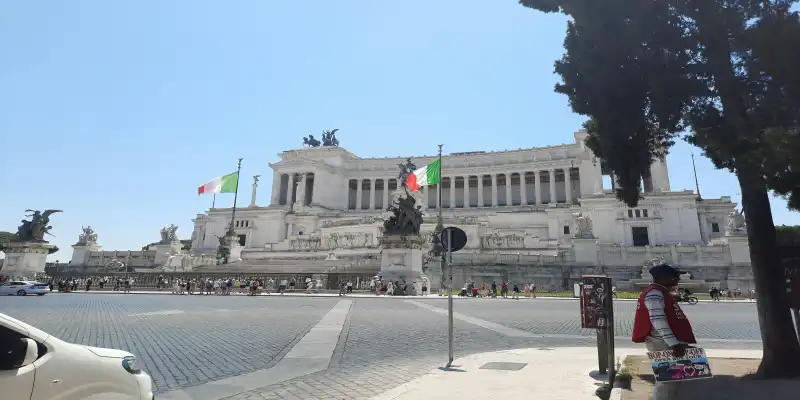
Highlighting the Best Art Galleries
4.1 Gagosian Gallery: Where Contemporary Meets Classic
The Gagosian Gallery is one of the world’s most prestigious art galleries, and its Rome location is no exception. “A Cultural Odyssey” does an excellent job of introducing readers to this contemporary art powerhouse.
The guide provides a brief history of the Gagosian Gallery and its influence on the global art scene. It highlights the gallery’s focus on contemporary art, with exhibitions featuring works by both established and emerging artists. The guide also explores the gallery’s role in bringing contemporary art to a broader audience, with exhibitions that often push the boundaries of traditional art forms.
The Gagosian Gallery’s Rome location is particularly notable for its blend of contemporary and classical influences, and the guide captures this dynamic beautifully. The gallery’s exhibitions often juxtapose modern art with classical themes, creating a dialogue between the past and the present.
4.2 Galleria d’Arte Moderna: A Showcase of 19th and 20th-Century Art
The Galleria d’Arte Moderna is another highlight of Rome’s art scene, and “A Cultural Odyssey” provides a comprehensive overview of this important institution. The gallery is dedicated to Italian art from the 19th and 20th centuries, with a collection that includes works by some of Italy’s most famous artists.
The guide provides a detailed history of the gallery, from its founding in the late 19th century to its current role as a major center for modern art. It highlights key works in the collection, including paintings by Giorgio de Chirico, Amedeo Modigliani, and Umberto Boccioni. The guide also explores the gallery’s role in promoting Italian art and culture, with exhibitions that celebrate Italy’s artistic heritage.
One of the strengths of this section is the guide’s focus on the gallery’s educational programs and public outreach efforts. It highlights how the gallery engages with the community through workshops, lectures, and other events, making it a vital part of Rome’s cultural landscape.
4.3 Palazzo Doria Pamphilj: A Private Collection of Unrivaled Masterpieces
Palazzo Doria Pamphilj is one of Rome’s most impressive private art collections, and “A Cultural Odyssey” gives it the attention it deserves. This historic palace is home to a vast collection of art, including works by Caravaggio, Velázquez, and Titian.
The guide provides a detailed history of the Doria Pamphilj family and their art collection, which has been passed down through generations. It highlights the most significant works in the collection, including Velázquez’s portrait of Pope Innocent X and Caravaggio’s Rest on the Flight into Egypt. The guide also explores the palace’s architecture and decor, which are as impressive as the art collection itself.
One of the unique aspects of Palazzo Doria Pamphilj is that it remains a private residence, and the guide captures this sense of living history. It provides practical information for visitors, including how to navigate the palace’s labyrinthine layout and the best times to visit.
4.4 Macro – Museum of Contemporary Art of Rome: A Modern Artistic Hub
The Macro – Museum of Contemporary Art of Rome is one of the city’s most important venues for contemporary art, and “A Cultural Odyssey” provides a thorough overview of this dynamic institution. The museum is housed in a former slaughterhouse, and the guide explores how the building’s industrial architecture has been transformed into a modern art space.
The guide highlights the museum’s focus on contemporary Italian art, with exhibitions that showcase works by both established and emerging artists. It also explores the museum’s role in promoting experimental art forms, with exhibitions that often push the boundaries of traditional media.
In addition to its coverage of the museum’s exhibitions, the guide also discusses Macro’s public programs, including artist talks, workshops, and performances. These programs are an essential part of the museum’s mission to engage with contemporary culture, and the guide provides detailed information on how to participate.
Curation and Thematic Organization
5.1 Selection Criteria for Featured Museums and Galleries
One of the strengths of “A Cultural Odyssey” is its careful selection of museums and galleries. The guide doesn’t just focus on the most famous institutions but also includes lesser-known gems that offer unique perspectives on Rome’s art scene.
The guide’s selection criteria are clearly based on both the quality of the collections and the cultural significance of the institutions. Each museum and gallery is chosen for its ability to tell a part of Rome’s artistic story, whether through its collection, architecture, or history.
5.2 Thematic Representation and Artistic Movements
“A Cultural Odyssey” is also notable for its thematic organization. The guide doesn’t just list museums and galleries but organizes them into themes that reflect different artistic movements and historical periods.
For example, the guide groups together museums that focus on ancient Roman art, such as the Capitoline Museums and the Museo Nazionale Romano. It also highlights galleries that showcase contemporary art, like MAXXI and Macro. This thematic approach helps readers understand the evolution of art in Rome and how different institutions contribute to this narrative.
5.3 The Role of Architecture in Enhancing the Visitor Experience
Architecture plays a crucial role in the visitor experience, and “A Cultural Odyssey” pays close attention to this aspect. The guide highlights how the architecture of each museum and gallery enhances the presentation of the art.
For example, it explores how the opulent architecture of Galleria Borghese complements the Baroque art it houses, and how the modern design of MAXXI creates a dynamic space for contemporary art. This focus on architecture adds an extra layer of depth to the guide, helping readers appreciate not just the art but the spaces in which it is displayed.
User Experience: Navigating the Guide
6.1 Ease of Use and Accessibility
“A Cultural Odyssey” is designed with the user in mind, and this is evident in its ease of use. The guide is well-organized, with clear headings and subheadings that make it easy to navigate. Each section is laid out logically, with museums and galleries grouped by theme or historical period.
The guide also includes practical information, such as opening hours, ticket prices, and directions, making it a valuable resource for planning visits. The inclusion of maps and floor plans further enhances its usability, allowing readers to navigate the museums and galleries with ease.
6.2 Interactive Features and Digital Integration
In addition to its physical format, “A Cultural Odyssey” also offers digital integration, with a companion website and mobile app that provide additional resources. These digital features include virtual tours, interactive maps, and multimedia content that enrich the reader’s experience.
The guide’s digital integration is particularly useful for those who want to explore Rome’s art scene from afar or plan their visit in advance. The virtual tours, in particular, offer a glimpse into the museums and galleries, allowing users to explore the art and architecture from the comfort of their own home.
6.3 Tips and Recommendations for Visitors
One of the most valuable aspects of “A Cultural Odyssey” is its practical tips and recommendations for visitors. The guide provides advice on the best times to visit each museum and gallery, how to avoid crowds, and where to find hidden gems.
The guide also includes recommendations for nearby restaurants, cafes, and shops, making it a comprehensive resource for exploring Rome’s cultural scene. These tips are based on firsthand experience and offer valuable insights for both first-time visitors and seasoned travelers.
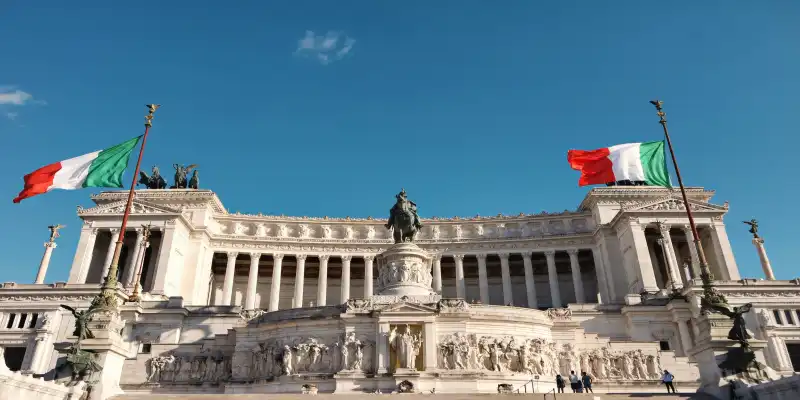
Cultural Significance and Educational Value
7.1 Preserving Rome’s Artistic Heritage
“A Cultural Odyssey” is more than just a guidebook; it’s a celebration of Rome’s artistic heritage. The guide emphasizes the importance of preserving this heritage for future generations, highlighting the role of museums and galleries in safeguarding these treasures.
The guide also explores the efforts of these institutions to restore and conserve their collections, ensuring that Rome’s art remains accessible to the public. This focus on preservation underscores the cultural significance of the guide and its contribution to the ongoing dialogue about the importance of art in society.
7.2 Enhancing Cultural Understanding Through Art
Art is a powerful tool for cultural understanding, and “A Cultural Odyssey” recognizes this by providing context for the artworks it features. The guide doesn’t just describe the art; it explains its significance in the broader cultural and historical context.
For example, the guide explores how the art of the Vatican Museums reflects the religious and political power of the Catholic Church, and how the contemporary art at MAXXI engages with current global issues. By providing this context, the guide helps readers gain a deeper understanding of the art and its place in history.
7.3 Educational Resources and Learning Opportunities
In addition to its cultural significance, “A Cultural Odyssey” also has educational value. The guide provides a wealth of information on the history of art in Rome, from ancient times to the present day. This information is presented in an engaging and accessible way, making it suitable for readers of all ages and backgrounds.
The guide also includes educational resources, such as suggested reading lists, links to online courses, and information on art history programs in Rome. These resources make the guide an excellent tool for both self-guided learning and formal education.
Pros and Cons of “A Cultural Odyssey: Rome’s Best Museums and Art Galleries”
8.1 Pros
- Comprehensive Coverage: The guide covers a wide range of museums and galleries, offering a thorough exploration of Rome’s art scene.
- Visual Appeal: The high-quality images and thoughtful layout make the guide both informative and visually pleasing.
- Educational Value: The guide provides valuable historical context and educational resources, making it an excellent tool for learning about art.
- Practical Tips: The guide includes practical advice for visitors, from the best times to visit to nearby dining recommendations.
- Digital Integration: The companion website and mobile app offer additional resources, including virtual tours and interactive maps.
8.2 Cons
- Limited Focus on Lesser-Known Institutions: While the guide covers many of Rome’s most famous museums and galleries, it could include more information on lesser-known institutions.
- Heavy Focus on Art History: The guide’s emphasis on historical context may not appeal to casual readers looking for a more straightforward travel guide.
- High Price Point: The guide is relatively expensive compared to other travel guides, which may be a drawback for budget-conscious travelers.
Final Verdict: An Artistic Journey Worth Taking
“A Cultural Odyssey: Rome’s Best Museums and Art Galleries” is a comprehensive and beautifully crafted guide that offers a deep dive into Rome’s rich artistic heritage. With its detailed descriptions, high-quality images, and practical tips, this guide is an invaluable resource for anyone looking to explore the cultural treasures of the Eternal City.
While the guide has a few minor drawbacks, such as its focus on well-known institutions and its higher price point, these are outweighed by its many strengths. The guide’s emphasis on education and cultural understanding, combined with its visual appeal and digital integration, make it a must-have for art lovers and travelers alike.
Overall, “A Cultural Odyssey” is an artistic journey worth taking, offering readers a chance to explore Rome’s best museums and art galleries from both a historical and contemporary perspective. Whether you’re planning a trip to Rome or simply looking to learn more about its art, this guide is sure to inspire and inform.
Rating: 8/10
Frequently Asked Questions (FAQs)
1. Is “A Cultural Odyssey: Rome’s Best Museums and Art Galleries” suitable for first-time visitors to Rome?
Yes, the guide is designed to be accessible to both first-time visitors and seasoned travelers. It provides a comprehensive overview of Rome’s art scene, with practical tips and detailed descriptions that enhance the visitor experience.
2. Does the guide include information on temporary exhibitions?
While the guide focuses primarily on the permanent collections of Rome’s museums and galleries, it also highlights some notable temporary exhibitions. For up-to-date information on current exhibitions, the companion website and mobile app offer additional resources.
3. Is the guide available in digital format?
Yes, “A Cultural Odyssey” is available in both print and digital formats. The digital version includes interactive features, such as virtual tours and maps, which enhance the reader’s experience.
4. Can the guide be used for educational purposes?
Absolutely. The guide provides valuable historical context and educational resources, making it an excellent tool for both self-guided learning and formal education. It also includes suggested reading lists and links to online courses.
5. Are there any discounts available for purchasing the guide?
Discounts may be available through certain retailers or during promotional periods. It’s recommended to check the publisher’s website or online retailers for any special offers.
6. Does the guide cover all of Rome’s museums and galleries?
While “A Cultural Odyssey” covers a wide range of museums and galleries, it focuses primarily on the most significant and well-known institutions. However, it also includes some lesser-known gems that offer unique insights into Rome’s art scene.

